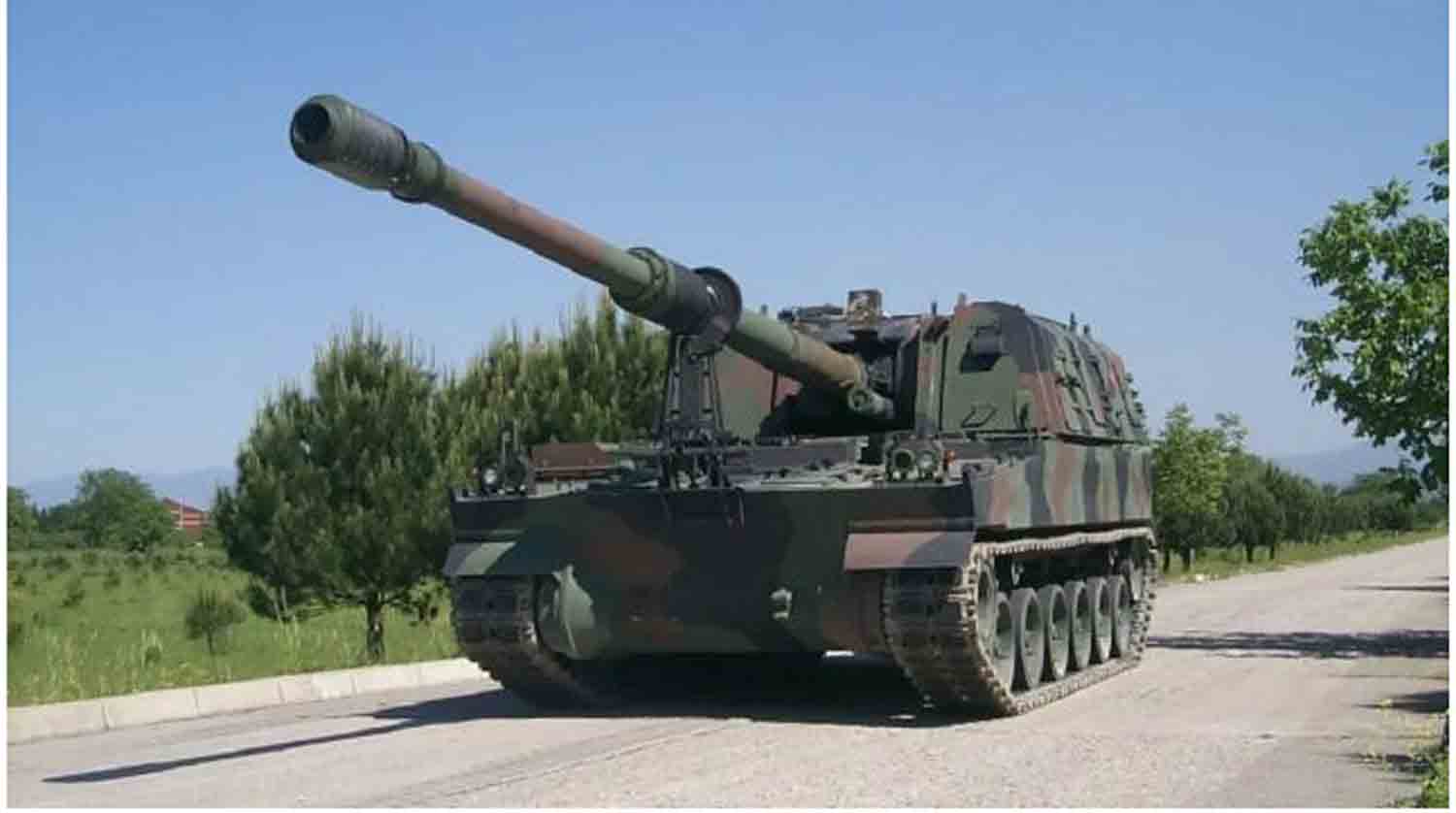South Korean defense leader Hanwha Defense is poised to unveil its K9 Thunder howitzer featuring a domestically produced engine for the first time. A recent announcement on its Facebook page confirmed that the new engine has successfully completed testing and boasts a power output of 1,000 horsepower.
Reports from South Korea indicate that the engine has been under development for the last three years and has already been tested in the challenging conditions of Egypt’s deserts, which may facilitate potential exports to Egypt, Saudi Arabia, and the UAE. The initiative to create this new engine was prompted by Germany’s restrictions on business within the Middle Eastern defense sector.
The K9 Thunder self-propelled howitzer is recognized as one of the most effective in its category, but until now, it has depended on foreign engines for its mobility. With its introduction in Abu Dhabi, now equipped with a new 1,000-horsepower domestically developed engine, the K9 signifies a significant advancement for South Korea’s defense capabilities. This development not only diminishes reliance on foreign suppliers but also underscores the nation’s increasing proficiency in creating its own propulsion technologies.
The creation of a new engine for the K9 is part of a broader trend. South Korea previously undertook a similar initiative with its K2 Black Panther main battle tank, which necessitated the development of an indigenous power system after a German supplier failed to meet engine delivery requirements.
The initial domestic version encountered technical difficulties; however, it was ultimately integrated into the serial production of the K2. With the introduction of the K9, the nation is making significant strides toward achieving complete autonomy in military vehicle production.
This development holds strategic importance not only for South Korea but also for international customers of the K9 Thunder. Nations like Turkey, Australia, Poland, and Finland, which currently utilize or intend to procure the K9, stand to gain from the new propulsion system, thereby mitigating potential risks associated with foreign engine import restrictions.
Additionally, the launch of the K9 featuring its new engine in Abu Dhabi highlights Seoul’s aspirations to reinforce its status as a global supplier of artillery systems.
South Korea’s advancements in this sector mirror a wider trend, as countries that have historically depended on foreign technology are increasingly focusing on domestic solutions to minimize strategic risks.
Should the K9’s engine demonstrate reliability, South Korea will further cement its reputation not only as a manufacturer of high-performance artillery systems but also as a significant contributor to military propulsion technology.
The K9 Thunder is a 155mm self-propelled howitzer developed by Hanwha Aerospace, a South Korean firm. It is engineered for contemporary high-mobility artillery operations, delivering exceptional firepower, improved mobility, and advanced protection for its crew.
The K9 features a welded steel armored hull that safeguards against 14.5mm armor-piercing projectiles and shrapnel from artillery shells. It can be further enhanced with modular armor systems to bolster its defense against mines and improvised explosive devices.
Equipped with a 155mm howitzer boasting a 52-caliber barrel, the K9 Thunder can engage targets at distances of up to 40 kilometers with standard munitions and reach up to 54 kilometers when utilizing rocket-assisted projectiles.
Its automatic loading mechanism enables a rapid-fire capability of three rounds within 15 seconds, while maintaining a sustained firing rate of two to eight rounds per minute.
The howitzer is capable of executing the Multiple Rounds Simultaneous Impact (MRSI) function, allowing several shells to strike a target at the same time, thereby amplifying its destructive capability. Additionally, it is armed with a 12.7mm machine gun for self-defense against enemy infantry and low-flying aerial threats.
The vehicle is equipped with an MTU MT 881 Ka-500 diesel engine that delivers 1,000 horsepower, combined with an Allison automatic transmission. This configuration allows it to achieve a maximum speed of 67 km/h and an operational range of up to 480 kilometers.
Its suspension system utilizes torsion bars along with hydraulic dampers, providing exceptional mobility over difficult terrains such as swamps, deserts, and snowy landscapes. Additionally, the chassis features a central tire pressure control system, enhancing traction across diverse ground conditions.
The K9 Thunder carries a diverse array of 155mm ammunition, including standard high-explosive (HE) shells, rocket-assisted projectiles for extended range, armor-piercing rounds, illumination and smoke shells, as well as sophisticated GPS-guided munitions like the KSTAM (Korean Smart Top-Attack Munition), which can autonomously engage armored targets.
The fire control system is equipped with a ballistic computer, laser rangefinder, inertial navigation, and is compatible with network-centric warfare systems, ensuring precise targeting and the capability to quickly reposition after firing to avoid counterattacks.
While primarily operated by the South Korean military, the K9 Thunder is also utilized by several other nations, including Turkey, Finland, Norway, Australia, India, Poland, and Estonia.
The system features several variants, including the K9A1 and K9A2, which come with advancements such as automated loading systems, upgraded electronics, and an increased firing range.
The Polish variant, known as K9PL, is equipped with local communication and command systems, whereas the Indian version, K9 Vajra-T, is specifically designed for operations in desert environments. Planned enhancements for the K9A2 include a fully automated loading system to boost the rate of fire and the incorporation of cutting-edge digital combat technologies.
Discover more from Defence Talks | Defense News Hub, Military Updates, Security Insights
Subscribe to get the latest posts sent to your email.





